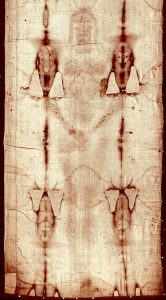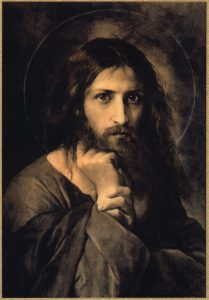 The Orthodox Church does not have a definitive, universally binding position on the authenticity of the Shroud of Turin. While some Orthodox Christians venerate it and believe it to be the authentic burial cloth of Christ, others are more cautious or sceptical. The matter is generally approached with reverence but also a degree of theological reserve.
The Orthodox Church does not have a definitive, universally binding position on the authenticity of the Shroud of Turin. While some Orthodox Christians venerate it and believe it to be the authentic burial cloth of Christ, others are more cautious or sceptical. The matter is generally approached with reverence but also a degree of theological reserve.
The Holy Church has made no dogmatic pronouncement affirming or denying the Shroud’s authenticity. Unlike the Roman Catholic Church—which, while venerating the Shroud, also refrains from officially declaring it a matter of faith—the Orthodox maintain that the truth of the Christian faith does not rest upon the Shroud’s authenticity.
Orthodoxy places high importance on sacred relics, icons, and historical connections to the life of Christ. As such, many Orthodox Christians approach the Shroud with respect and reverence, even if they do not insist on its authenticity. For some, it is seen as a possible proof of the resurrection or at least a powerful symbol of Christ’s Passion. I will come back to that in a moment.
The Shroud’s Western provenance, with its most well-known appearance in 14th-century France, also raises questions for some Orthodox scholars. The Eastern Churches had their own traditions of Christ’s miraculous image, especially the Image of Edessa (the Mandylion), which some researchers have attempted to link to the Shroud. However, this identification remains speculative and is not universally accepted.
Among many Orthodox faithful—especially in Greece, Russia, Serbia, and Lebanon—there is genuine and widespread interest in the Shroud. Orthodox pilgrims often visit it, and some Orthodox publications and documentaries explore its potential authenticity. Certain Orthodox theologians and scientists have written in support of its authenticity, citing evidence from pollen grains, blood stains, and anatomical accuracy.
The Church does not reject the Shroud. It does not formally endorse it as an article of faith.
The Church encourages reverent engagement with it, but also emphasises that salvation and the truth of the Resurrection are not contingent upon the Shroud’s authenticity.
Thus, I would say that the Shroud is treated with respect, not as doctrine, and opinions vary within the Orthodox world.

Comments are closed.